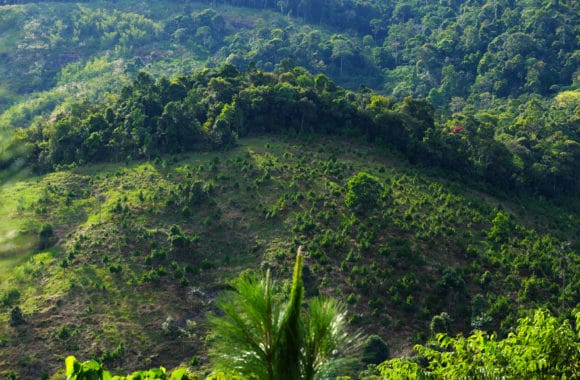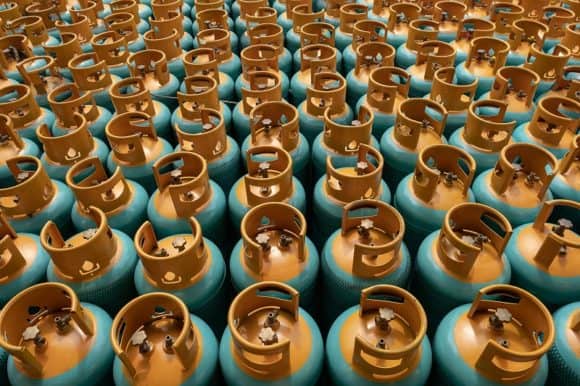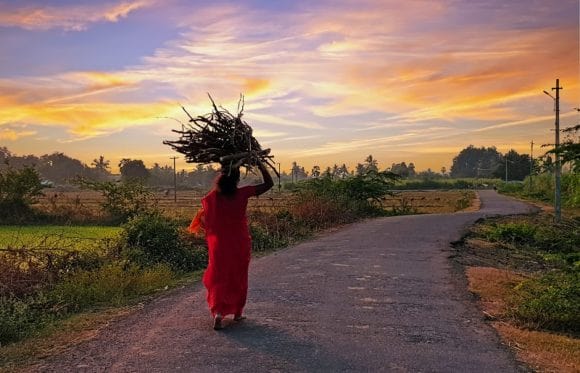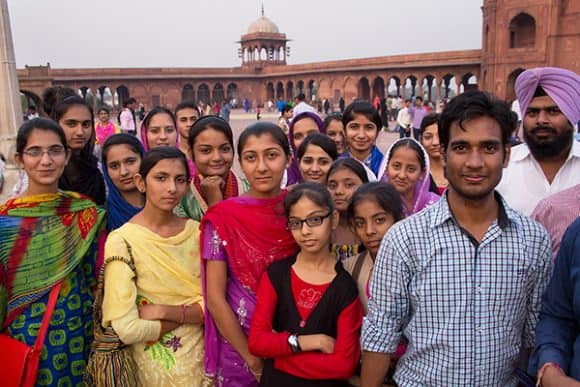Sep 23, 2021 | Brazil, China, Data and Methods, Energy & Climate, India, Russia, Science and Policy, Young Scientists
By Neema Tavakolian, 2021 IIASA Science Communication Fellow
Ever wonder why countries can never agree on issues related to climate change and the environment? Young Scientists Summer Program (YSSP) participant Felix Schenuit dives into the politics and challenges surrounding carbon dioxide removal in international climate negotiations.
The Paris Agreement has been lauded as a landmark effort to address climate change and has been signed by nearly every country in the world. The agreement sets out ambitious goals such as reaching temperature targets, setting net-zero carbon targets, and providing financial, technical, and capacity building support to those countries that need it.
One topic that has been receiving increasing attention since the adoption of the agreement is carbon dioxide removal, or CDR – which comprises man made processes involving the direct removal of carbon dioxide from the atmosphere and sequestering it somewhere else, usually underground or under the sea floor. Since it was first proposed, CDR has been discussed on many platforms including critical comments, journals, and studies. 2021 IIASA YSSP participant Felix Schenuit studies how the debate, which has been largely ignored by policymakers until the Paris Agreement, is evolving, and how CDR is being taken up in climate policymaking.

© Felix Schenuit
Felix Schenuit comes from a background of political science and public policy. It was during his employment at the German Institute for International and Security Affairs (SWP) that he became fascinated by CDR and the political debates surrounding the impacts it can have on the fight against climate change. This is when he decided to combine his newfound interest with his background and experiences in international relations and public policy to pursue a PhD at the University of Hamburg comparing CDR policymaking in different countries and the role scientific knowledge has on its implementation.
Building on a previous study comparing CDR governance among nine Organisation for Economic Co-operation and Development (OECD) cases, Schenuit is now focusing on the role of scientific knowledge surrounding CDR in Brazil, China, India, and Russia. These countries account for a significant portion of the world’s greenhouse gas emissions due to their rapid industrialization and expanding economies. China and India are especially significant due to their great influence in ongoing international climate negotiations regarding the Paris Agreement.
Schenuit uses integrated assessment models to gather information and data about the role of CDR in different countries in decarbonization pathways.
“These models help us to understand what amount of CDR we are likely to need to achieve Paris Agreement targets. Case studies on specific countries are an important second step to explore facts on the ground about different policy initiatives, emerging CDR facilities, and efforts in each region. We reach out to country experts and build interdisciplinary bridges to investigate how CDR is addressed politically, what amounts are available and politically feasible, as well as relevant knowledge gaps,” he explains.
One of the biggest challenges remaining for CDR is limited knowledge about different CDR methods, both in science and policy circles. There are many ways one can remove carbon dioxide from the atmosphere, ranging from afforestation, to soil carbon sequestration, ocean fertilization, direct CO2 capture from the air, and the use of biochar, among others.

Reforestation on hill at Bao Loc mountain pass, Vietnam © Hoxuanhuong | Dreamstime.com
“When it comes to methods, many policymakers are unaware of the portfolio of available methods. Each method has different tradeoffs, both environmentally and politically. For example, in Germany, carbon capture and storage (CCS) is very contested and most policymakers are hesitant to even address CDR. Thus, in Germany one may need a different set of methods than in the UK, for example, where CCS-based CDR methods are pursued proactively,” Schenuit says.
Many predict that the role of international politics in CDR governance under the Paris Agreement is going to be difficult and tricky to navigate. Schenuit argues that it is still a bit too early in the debate for predictions as policymakers have only recently been directly addressing CDR. He does however agree that there is already strong evidence of politics at play and alliances are forming.
The study on Brazil, China, India, and Russia will yield fascinating results, as it will give us an idea about future disputes and questions regarding the carbon in our atmosphere. Questions like where we will be removing carbon and who is going to pay for it. One thing is for certain, however. Time is running out to meet the targets of the Paris Agreement, and international cooperation is desperately needed.
Note: This article gives the views of the author, and not the position of the Nexus blog, nor of the International Institute for Applied Systems Analysis.
Feb 28, 2020 | Air Pollution, Alumni, India, Poverty & Equity, Young Scientists
By Abhishek Kar, Postdoctoral Research Scientist at Columbia University, USA, and IIASA Young Scientists Summer Program (YSSP) alumnus.
Abhishek Kar shares his thoughts on the Indian government’s Ujjwala program, which aims to scale up household access to Liquefied Petroleum Gas (LPG) for clean cooking.

© Kaiskynet | Dreamstime.com
About 2.9 billion people depend on burning traditional fuels like firewood rather than modern cooking fuels like gas and electricity to cook their daily meals. The household air pollution caused when these fuels are burned, along with the resultant exposure to kitchen smoke causes several respiratory and other diseases. It is estimated that between 2 and 3.6 million people die every year due to lack of access to clean cooking fuels. It also has severe environmental effects like forest degradation and contributes to climate change. To address these challenges, the Indian Government launched a massive program called Pradhan Mantri Ujjwala Yojana (PMUY, or Ujjwala) to scale up household access to Liquefied Petroleum Gas (LPG) in May 2016.
My IIASA Young Scientists Summer Program (YSSP) project under Shonali Pachauri’s supervision was about analyzing consumption patterns of LPG in rural India. We looked at whether there was any differences in consumption patterns between the Ujjwala beneficiaries and general consumers. The analysis formed part of my PhD research and was eventually published as the cover story for the September 2019 issue of the journal, Nature Energy. The journal also invited us to write a policy brief, which was published in January 2020. The study’s findings received widespread media attention, especially in India. When I talk to journalists, they often ask whether the Ujjwala program is a success or a failure. I would like to use this opportunity to clear common misconceptions and share my thoughts.
The Ujjwala program’s original mandate was to tackle the challenge of “lack of access to clean fuel” and to make LPG affordable for poor women. The program provided capital subsidies to this end. Unfortunately, the policy document neither discussed usage of LPG as an exclusive or primary cooking fuel, nor did it provide any incentive for regular use (barring the universal LPG cylinder subsidy that is provided to everyone). The program was ambitious in terms of both scale and timeline, and fulfilled its original aim of providing LPG connections for millions of poor women.
Current debates around the program’s failure to result in smokeless kitchens are happening only because Ujjwala succeeded in fulfilling its original mandate of ensuring physical access. In my opinion, it is truly a remarkable achievement to have reached out to 80 million poor women within 40 months. The process not only involved massive awareness generation and community mobilization, but also ramping up the supply chain to meet increased demand. While I have a lot to say about how Ujjwala can be improved, I think it would be unfair to call it a failure. Access is the first step towards transition to clean fuels, and at least in this respect, it was an extraordinary success, making it a model of energy access for developing countries.
Our research shows that Ujjwala was able to attract new consumers rapidly, but those consumers did not start using LPG on a regular basis. Based on the literature and my own experience, there are five reasons why regular LPG use is a challenge for Ujjwala consumers, and the scheme did not have any specific provisions to effectively address them.
First, rural communities generally have easy access to free firewood, crop residues, cattle dung, etc. So why would they start paying for commercial fuel, when free fuel is readily available for cooking?
Secondly, Ujjwala (bravely) targeted poor women, who generally have limited disposable cash and seasonal, agriculture linked fluctuations in income. If there is no additional income, what costs would a poor family on an already tight budget have to cut to afford such a regular additional expense? While the program has made a 5 kg cylinder option available in response to this issue, the impact on LPG sales is still unknown.
Thirdly, home delivery of LPG cylinders is a challenge in most rural areas, as the cost of delivery for LPG distributors often outweighs the commission they receive. If there is no delivery option, poor rural families who often don’t have access to transport would need to arrange for a cylinder to be picked up from a far-off retail outlet. Oil Marketing Companies have vigorously been pushing for home delivery, but unless there are explicit incentives for this, the situation is unlikely to improve.

© Dmitrii Melnikov | Dreamstime.com
In the fourth place, gender dynamics make the situation even more complicated. Men are often financial decision makers who have to make budget cuts, while women are the primary beneficiaries of LPG in terms of a quick and smokeless cooking experience, with the side benefit of avoiding the drudgery of fuelwood collection. The laudable effort of the LPG panchayat platform, where women share their success stories and strategies to overcome opposition within their homes, is a step in the right direction, but it is unlikely that this will be sufficient to tackle a deep-rooted societal problem.
Lastly, and perhaps most importantly, people will have to stop using mud stoves and start using LPG stoves, which may involve real (or, perceived) changes in the taste, texture, look, and size of food items. As a student of habit change literature, I am surprised that anyone expected that such a switch would not be accompanied by behavior change interventions.
Ultimately, the Ujjwala scheme provided incentives to reduce the burden of the capital cost of LPG connections, and poor female consumers responded to it positively. This is a successful first step towards clean cooking energy transition. However, there were no scheme incentives to promote use, except general LPG subsidies, which is available to all, including the urban middle class. Consumers simply decided that the transition to LPG through regular purchase of LPG refills was not worth it, and did not take the next step. I would however not call this a failure of Ujjwala, as that was never the original program objective.
We have to acknowledge that Ujjwala’s phenomenal success in providing access to clean fuel has put the spotlight on its ineffectiveness to ensure sustained regular use. If you ask me, this is a classic case of the glass half-full or half-empty scenario. Or, as my PhD supervisor at the University of British Columbia, Hisham Zerrifi, puts it: “It depends!”
References:
[1] Kar A, Pachauri S, Bailis R, & Zerriffi H (2019). Using sales data to assess cooking gas adoption and the impact of India’s Ujjwala program in rural Karnataka. Nature Energy DOI: 10.1038/s41560-019-0429-8 [pure.iiasa.ac.at/15994]
Note: This article gives the views of the author, and not the position of the Nexus blog, nor of the International Institute for Applied Systems Analysis.
Jul 31, 2019 | Alumni, IIASA Network, India, Women in Science
By Nandita Saikia, Assistant Professor of Population Studies at Jawaharlal Nehru University, New Delhi, and former postdoctoral researcher at IIASA
IIASA alumna Nandita Saikia, looks back on the two years that she spent living in Austria while working as a postdoctoral researcher in the World Population Program.
The submission of my PhD thesis, marriage, taking up a university position, and becoming a mother, all happened rather quickly for me. By the time I realized that I wanted to experience working outside of my own country, a good five years had flown by from the day that I received my PhD. For a female academic, who is trying to balance family and work, a decision to move abroad was never going to be easy. It needed a lot of planning, not only in terms of the research topic that I wanted to pursue, but also in terms of organizing things in a way that would lead to the least disruption for the research students I was supervising and of course, my family.

Nandiita Saikia | © Nandita Saikia
With little hope and many conditions, I searched for postdoctoral positions on the websites of various institutes. I was amazed when I found an advertisement for a postdoc position at IIASA, which mentioned that it had extended application deadlines for another 18 months – specifically to accommodate female candidates on maternity leave. This gender sensitive rule made my application possible, and ultimately gave me a rich experience and memories that I will cherish forever.
Looking back at the past two years at IIASA, a long list of reasons why this was such an amazing time of my and my family’s lives, comes to mind. The institute is housed in a beautiful two hundred and seventy five year old castle in Laxenburg just outside of Vienna. As an IIASA employee, my family and I could access the green imperial park once meant for Austria’s iconic empress Sissi, at any time. Apart from massive, century old trees that may have shaded Sissi on her own visits, the park contains a spring, a waterfall, and a lake with numerous monuments to Austrian royal families that frequented it over the centuries. The lush green trees, the musical sound of the spring, together with chirping wild ducks and swans, the Laxenburg castles, the tall yellow church under the deep blue sky – all constantly stimulated the spirit of a nature lover like me.
In terms of the more practical aspects of working at IIASA, staff from administration were always available to address all our personal and professional issues efficiently and warmly. We were supported with everything from extending our visas, finding a suitable place to live, and communicating with my son’s school in German, to locating the right physician. The IIASA Communication Department also helped me to convey the meaning of my research in “non-technical language” to a wider audience, for whom the findings are ultimately meant.
The soul of IIASA is truly international and inter-disciplinary. From North to South, East to West, I met colleagues from all parts of the world. The overall research environment is conducive to doing quality research. Our program director, Wolfgang Lutz, extended all possible support for me to stay at IIASA for two years. I however still had enough freedom to manage my responsibilities in terms of the supervision of my PhD students back in India.
IIASA always encourages its employees to be active and fit and supports them to do this in numerous ways. There are a number of clubs and activities on offer, including yoga, a music club, a running club, a swimming club, cycling, German lessons, aerobics, and a tennis club. The institute also maintains a gym for staff members. Some of my colleagues even kept workout clothes in the office for when they could manage to participate in some of these activities amidst their busy schedules. Although it was of course not possible to be in all the clubs, you had a choice, which contributed to the overall “feel good” environment. Being an international research organization, IIASA celebrates the different cultures of its staff members by organizing themed social gatherings like Asia Day, Latin American Day, Canada Day, and Mediterranean Day, to name a few, during which staff have the chance to taste authentic homemade cuisines and see cultural music or dance performances by colleagues. My heart knew no bounds when I got a chance to perform a Bollywood number and an Indian folk dance with my international colleagues!
I also developed an affinity with the IIASA Women in Science Club, which often organized “Meet, Greet and Eat” sessions during which we had the opportunity to interact with established women scientists in an informal way. It was indeed an eye opener to learn about how they overcame common challenges either in their early or later careers.
During our stay, we fully experienced life in Vienna, which has repeatedly been ranked as the best city in the world to live in. The centrality of Vienna also helped us to explore many neighboring countries. In our second year, we lived in Laxenburg where we felt very much at home. We loved how smoothly the little town runs while offering everything needed for a high quality life when raising young children.
Our time at IIASA was extremely productive, but we still felt as if we were in Vienna for a two-year long vacation! If someone asks me whether they should consider IIASA for a post doc or the Young Scientists Summer Program, my answer will be: “Yes, don’t even think twice!”
Nandita Saikia was a postdoctoral researcher at IIASA from 2017 to 2019. More information available at www.nanditasaikia.com.
Note: This article gives the views of the author, and not the position of the Nexus blog, nor of the International Institute for Applied Systems Analysis.
Jul 22, 2019 | Air Pollution, China, India, Women in Science
By Shonali Pachauri, Senior Researcher in the IIASA Energy Program
Shonali Pachauri explains why data, indicators, and monitoring at finer scales are important to ensure that everyone benefits from policies and efforts aimed at achieving national and global development goals.
A world where no one is left behind by 2030, is the promise nations have made by adopting the United Nations’ Agenda for Sustainable Development. But how does one ensure that no one is left behind? It requires designing inclusive policies and programs that target the most vulnerable and marginalized regions and populations. Sound data and indicators underpin our current understanding of the status of development and are an important part of periodic reviews to determine the direction and pace of progress towards achieving agreed goals. These form the basis of informed decisions and evidence-based policymaking. While an exhaustive list of indicators has been prescribed to monitor progress towards the globally agreed goals, these have been largely defined at a national scale. These goals rely overwhelmingly on simple averages and aggregates that mask underlying variations and distributions.

Indian woman walking home with fire wood © Devy | Dreamstime.com
Recent work I’ve been involved in makes the pitfalls of working with averages and aggregates alone abundantly clear. They can obscure uneven patterns of changes and impacts across regions and groups within the same nation. The overall conclusion of this work is that, even if the globally agreed goals are met by 2030, this is no guarantee that everyone will benefit from their achievement.
A recent Nature Energy – News & Views piece I was invited to write reports on a study that assessed the impacts of China’s recent coal to electricity program across villages in the Beijing municipal region. The program subsidizes electricity and electric heat pumps and has been rolling out a ban on coal use for household heating. The study found that the benefits of the program to home comfort, air quality, and wellbeing varied significantly across rich and poor districts. In poor districts, the study found that the ban was not effective as poor households were still unable to afford the more expensive electric heating and were continuing to rely on coal. Studies such as this one that help us understand how and why benefits of a program may vary across regions or population groups can aid policy- and decision makers in formulating more fair and inclusive policies.
In other recent research carried out with colleagues in the IIASA Energy Program, the Future Energy Program at the Fondazione Eni Enrico Mattei (FEEM) in Italy, and the Institute for Integrated Energy Systems at the University of Victoria, Canada, we developed a detailed satellite nightlights derived dataset to track progress with providing electricity access at a sub-national level in Africa. We found that while progress with electrification between 2014 and 2018 varied across nations, at a sub-national provincial level, disparities were even more pronounced. Even more surprising, while electricity access is generally higher and easier to extend in urban areas, we found urban pockets where access has stagnated or even worsened. This correlated with areas where in-migration of populations had been high. These areas likely include urban slums or peri-urban regions where expanding electricity access continues to be challenging. Furthermore, our analysis shows that even where access has been extended, there are regions where electricity use remains extremely low, which means that people are not really benefitting from the services electricity can provide.
In a final example, of research carried out with collaborators from the University of British Columbia and the Stockholm Environment Institute, we evaluated a large nationwide program to promote cooking with liquefied petroleum gas (LPG) in Indian households to induce a shift away from the use of polluting solid fuels. While this program specifically targets poor and deprived, largely rural households, our assessment found that although there has been an unprecedented increase in enrollments of new LPG customers under the program, this has not been matched by an equal increase in LPG sales. In fact, we found consumption of LPG by program beneficiaries was about half that of the average rural consumer. Moreover, when we examined how purchases were distributed across all new consumers, we found that about 35% of program beneficiaries purchased no refills during the first year and only 7% bought enough to substitute half or more of their total cooking energy needs with LPG. Clearly, the health and welfare benefits of a transition to cleaner cooking are still to be realized for most people covered by this program.
Analyses, such as the examples I’ve discussed here, clearly highlight that we need data, indicators, and monitoring at much finer scales to really assess if all regions and populations are benefitting from policies and efforts to achieve national and globally agreed development goals. Relying on aggregates and averages alone may paint a picture that hides more than it reveals. Thus, without such finer-scale analysis and an understanding of the distributional impacts of policies and programs, we may end up worsening inequalities and leaving many behind.
References:
[1] Pachauri S (2019). Varying impacts of China’s coal ban. Nature Energy 4: 356-357. [pure.iiasa.ac.at/15905]
[2] Falchetta G, Pachauri S, Parkinson S, & Byers E (2019). A high-resolution gridded dataset to assess electrification in sub-Saharan Africa. Scientific Data 6 (1): art. 110. [pure.iiasa.ac.at/15982]
[3] Kar A, Pachauri S, Bailis R, & Zerriffi H (2019). Using sales data to assess cooking gas adoption and the impact of India’s Ujjwala program in rural Karnataka. Nature Energy [pure.iiasa.ac.at/15994]
Note: This article gives the views of the author, and not the position of the Nexus blog, nor of the International Institute for Applied Systems Analysis.
Feb 4, 2019 | Demography, Education, India, Postdoc
By Nandita Saikia, Postdoc Research Scholar at IIASA
What matters more when it comes to preventing unexpected and tragic adult deaths, between the ages of 15 and 60, in low- or middle-income countries? Is it wealth? Or education?
With the advent of demographic and health surveys (DHS), empirical studies documented that the education level of mothers matters more than the wealth of the household when it comes to preventing deaths among children in these countries. However, the same question largely remained unanswered for adults, as such surveys rarely collect information on adult deaths and the socioeconomic status of the dead individuals. In these countries, in general, death registration systems are poor, which again hinders scientific studies addressing this issue.

© Donyanedomam | Dreamstime.com
One possible solution is the clever use of indirect methods or models on census and survey data, developed by demographers to derive rates from limited, deficient and defective data. These methods use indirect information collected by surveys for a different purpose. For example, by using women’s siblings’ survival status, one can estimate maternal mortality, or by using women’s widowhood status, one can estimate male adult mortality.
In our recent study on India, we used one such method, called the Orphanhood method, to document life expectancy differences in adulthood by important socioeconomic characteristics. Because of the reasons mentioned above, there is hardly any scientific evidence on life expectancy differences by education or economic status in India, a country with exceptional cultural and socioeconomic diversity. The importance of studying adult mortality disparity in India also lies in the fact that India experiences relatively higher adult mortality than some of its neighboring countries with similar level of economic development. India’s official statistics shows that adult females belonging to the northeastern state of Assam have more than two times the mortality risk of adult females belonging to the southern state of Kerala. In addition, because of drastic reduction of under five deaths in India in recent years, more and more premature deaths in India will occur in adult age in near future. We used adult parental survival data from a nationally representative large-scale survey, called the India Human Development Survey, 2015-2016, to estimate life expectancy at age 15 in 1998-1999.
We found that lower levels of education of the deceased adults or their offspring, leads to more disparity than any other socioeconomic characteristic, including income status of the offspring, caste, or religion. Literate adults of both sexes at age 15 lived about 3.5 years more than that of their illiterate counterparts. On average, parents of children educated to higher-secondary level (and above) gain an extra 3.8-4.6 years of adult life compared to parents of illiterate children. We found that disparity in adult life by caste and religion is much smaller than disparities arising from educational attainment. For example, female Hindu adults lived 1.3 years more than female non-Hindu adults and male Hindu adults lived 0.9 years more than male non-Hindu adults.
One inherent limitation of indirect demographic methods is that they cannot provide estimates in the most recent years. Despite our estimates referring to a time period about twenty years ago, they are still crucial, as this kind of disparity in adult deaths does not disappear in such a short time span. Our results suggest that investing in education can be more rewarding than anything else to prevent untimely deaths, and to prevent inequalities across population subgroups. Meanwhile, we suggest including appropriate indirect questions in surveys or censuses to track survival status by social group or small geographical area until vital registration systems in countries such as India become fully functional.
Reference:
Saikia N, Bora JK and Luy M (2019). Socioeconomic disparity in adult mortality in India: Estimations using the Orphanhood method. Genus DOI: 10.1186/s41118-019-0054-1 [pure.iiasa.ac.at/id/eprint/15730/]
Note: This article gives the views of the author, and not the position of the Nexus blog, nor of the International Institute for Applied Systems Analysis.








You must be logged in to post a comment.